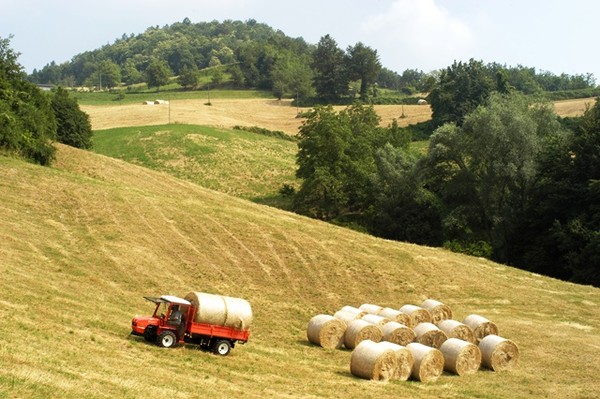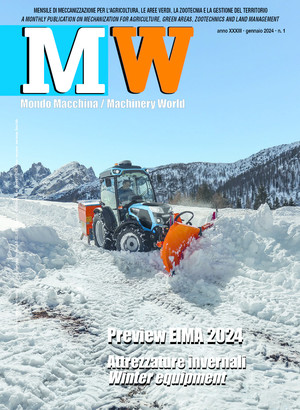
Rural Development Program: seven-year 2014-2020 start up
This new year marked the opening of operations for new rural development financing program committing the European Union up to 2020. The new RDP, which includes specific measures for the purchase of machinery and equipment, must come through the consultations of the EU Member States responsible for setting priorities and criteria for assigning funds to become operative
The European Parliament and the Council adopted on 16 December last year the four regulations covering the Common Agricultural Policy (CAP) and the Multiannual Financial Framework (MFF) transition regulation for the period 2014-2020 to open the procedure for sending the measures on to the Member States for passage. The current year will also commit Italy to completing the outgoing program and handling the choices entrusted to national policymakers in the new program. Among the many issues Italy will be required to deal with are: the characteristics of the beneficiaries of CAP payments (active farmers); the sharing of funds allocated for various items of farm payments (which items of active aid and what percentages of the national ceiling); the application of regulations at the regional or national level (a single national budget or division among the regions); the ways and means for achieving more uniform payments than those at present (internal convergence for approaching uniformity of aid per hectare within the same region). Of equal importance will be the choices made for greening. The intention of this measure is to introduce to the first CAP pillar incentives for farmers to pursue operations of benefit for the climate and the environment. It is up to the Member State to establish which land areas among those listed in the regulation can be classified as ecological focus areas (EFA), whether to use conversion factors (listed in the attachment) to calculate total hectares named as farms' EFA, whether to designate up to 50% as EFA at the regional level to create ecological areas in proximity for all farmers, with nearby farms, to respect the EFA requirement collectively. The deadline set by the EU for closing this procedure is August 2014.
Rural development
Rural development is complicated to enact because 2014 is a transition year from the old RDP to the new one and this involves various steps to follow by the Member State, the regions and the provinces. The RDP framework was set in legislative texts at the end of 2013 for the four basic regulations but must the regulation on enactment by the Commission must wait until next March. National and regional planning has been going forward for some time and is awaiting the judgement of Brussels on the Partnership Agreement presented by the government which sets out the national resources needed for co-financing the programs for seven years. On the basis of EU regulations, the agreement is a strategic document which defines the results expected, priorities and the ways to use European structural funds for the 2014-2020 period. Some parts of this draft agreement must be completed and reviewed further by central and regional administrations and economic and social partners. In the meantime, a proposal put forward by the Ministry for Agricultural Policy must come under discussion. This proposal is to flank the RDPs in each of the regions with a national program built around four issues: a national network for the coordination of the regional programs; measures for insurance against risks in farm management; animal biodiversity; infrastructure for irrigation. Regulations for the commitment of resources and payments for the current year have already been defined. The general rule for these commitments is that 2007-2013 resources must be fully exhausted before new commitments can be made regarding 2014-2020 financing. As of 31 December 2013, resources of 438 million euro were still to be liquidated of which 312 euro are earmarked for Regional Convergence and 121 million for Regional Competitiveness. The management authority, communicating to the Commission, the complete use of resources under the measure, can take on new commitments under future planning. Some measures, however, are certain to disappear or change radically: in axis 1, measure 113 on early retirement of farmers and measure 131 Helping farmers to adapt to standards based on Community legislation; axis 2, 221 and 223 first afforestation of agricultural land and of non-agricultural land. New commitments to these measures cannot be made in 2014 and 2015. Under initial exemptions, it will be possible to extend multiannual commitments now in vigor to 31 December 2014 for the measures 214, 215 and 225 Agri-environmental payments, Animal welfare payments and Forest environment payments.
Regulations on the eligibility of transition spending appear more uniform. In fact, spending on commitments made under the old RDP will be allowable under the 2014-2020 EAFRD whether they are specifically foreseen in the new RDP (as are expenditures given extended duration of exemption) and clearly identified through their management and control systems.
In any case, these allocations can be paid out before 31 December 2014, the deadline for payments under the 2007-2013 RDP, only if the financing for the measures named has already been used up. Above all, the transition regulations are complicated and must be read along with the norms on Member State aid according to future RDP commitments and by taking into account that also in this context a one-year extension is provided for exempting the total agricultural and forestry sector (Reg (EU) 1857/2006) as well as the guidelines for State aid for agriculture. Under the new RDP, the Member States and regions must decide which measure to use to reach their objectives set on the basis of six general priorities with related sectors of interest and each program must cite at least four of these priorities.
The span of the new RDP will also give Member States and regions the opportunity to draft sub-programs on specific issues to better focus on specific needs such as involving young farmers, small scale farmers, mountainous areas, women in rural areas, the mitigation of climate change, biodiversity and short agri-food production chains. In these years, programing the menu of twelve measures which can be activated (focus area) and can be combined without impediment and priorities finalized in that measures can be incorporated








